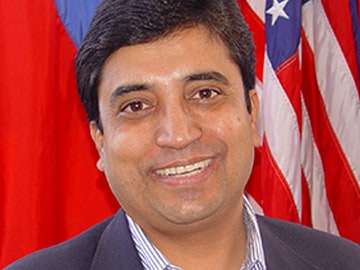
Four Myths About Doing Business in India
How big is the Indian middle class really?
When business leaders worried about globalization aren’t following developments in China, conversations usually turn to India. Collectively the two countries account for about one in three people on the planet. Despite India’s size, common misperceptions persist about the business environment. Here are four myths that could derail any market entry strategy:
One India awaits
People who talk about doing business in India, as if the country were one massive market, already have committed the first blunder. The country is big and the landscape diverse. What works in Mumbai does not always work in Bangalore or Kanpur.
Dietary habits, income levels, consumer exposure and preferences, languages, customs, infrastructure and government policies vary widely. Even Hinduism, a unifying force across India, changes regionally because some gods and goddesses and religious practices and rituals are more popular in some locations than others.
Instead of adopting a “one India” strategy, companies that succeed often target specific regions. Many of India’s 28 states merit the same treatment that companies give to sovereign nations elsewhere.
Uttar Pradesh has a population that almost matches Brazil. Maharashtra is nearly the size of Mexico, and West Bengal is larger than Argentina and most European countries.
Unlike the trend toward centralized power in the United States, Indian states have gained increased autonomy in recent decades. In many ways the Indian market is more like the European Union, which shares a single currency among 27 members.
Global companies understand the differences between Germany and Greece. They also need to pay attention to the differences between Gujarat and West Bengal.
Indians speak English
Indians appreciate at least three holdovers from British rule. One is cricket, another is railways, and the third is English.
The imperial language opens doors for educated Indians across the Western world and within their own country, a subcontinent with 22 languages and dozens of dialects. Every 500 kilometers, the local language changes. This means when Indians from New Delhi do business with their counterparts from Chennai or other domestic markets, conversations occur in English.
The problem is, most Indians don’t really speak English. Those who are educated speak a brand of the language that locals call “Inglish.” Regional accents can be strong, which may cause some problems for British and American visitors.
The rest of India — about 90 percent of the population — speaks little or no Inglish. The deciding factor is usually education, not income level, which creates challenges for Western marketers trying to target specific demographics. Some middle-class families do not speak Inglish, while some working-class families do.
No matter how poor they are, nearly all Indian parents want their children educated in English. This means the percentage of Inglish speakers will increase as the Indian economy emerges, removing barriers for Western companies.
In the meantime, marketers selling anything at the base or even middle of the economic pyramid will need to consider local language strategies.
Engineers abound
India graduates more than 500,000 engineers each year, dwarfing the numbers anywhere else in the world except China. Some Western companies see these statistics and drool.
They assume they can open their technology centers in India and find cheap professionals ready to lead complex projects. Unfortunately, these companies don’t know about India’s talent paradox.
Although India has a handful of top-tier engineering schools, most of the country’s technical institutes produce graduates who are not market ready. The problem is compounded when the best homegrown engineers leave India to work in the United States or Europe.
That leaves technology companies scrambling for Indian talent. They can hire local engineers, but when they do they should plan to provide six months to one year of additional training.
Purchasing power parity
Another deceptive statistic involves the size of India’s middle class, which is expanding rapidly as the country sustains 7 percent to 8 percent GDP growth. Some estimates put the number of middle-class Indians at about 300 million.
Such a massive market might exist for companies selling sandals or watches in India. But as Mercedes-Benz discovered in the 1990s, opportunities are more limited for companies selling high-end products.
This is because middle-class Indians do not have the same purchasing power as their counterparts in the United States or Europe. An annual income of $20,000 might be enough to lift an Indian family into the middle class — a lower threshold than the West. Indian consumers also have different preferences and values.
So how big is the Indian middle class really? It depends on the industry.
The cellphone market tops 900 million, the second largest in the world behind China. The television market is 150 million and growing fast. Indian families love television and will sacrifice to buy a quality home entertainment system before other high-end products because of the status that comes with the purchase.
Meanwhile, the automobile market might be closer to 15 million. Most middle-class commuters rely instead on public transportation or ride scooters or motorcycles.
Brand, status and quality matter in India. But so does price. Middle-class Indians do not part easily with their money, and Western market pricing levels don’t always work. Companies that succeed find ways to adapt.
Kishore Dash, Ph.D., is an associate professor of global studies at Thunderbird School of Global Management in Glendale, Arizona.
[This article has been reproduced with permission from Knowledge Network, the online thought leadership platform for Thunderbird School of Global Management https://thunderbird.asu.edu/knowledge-network/]















